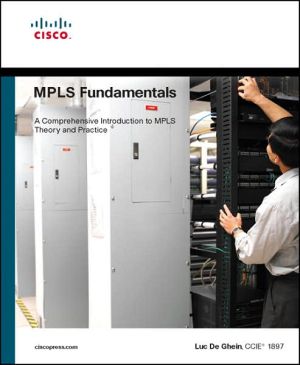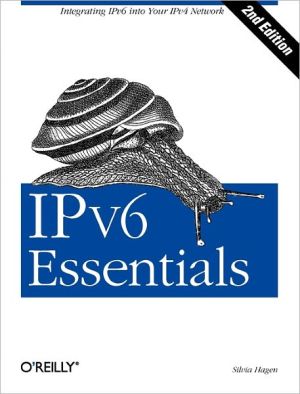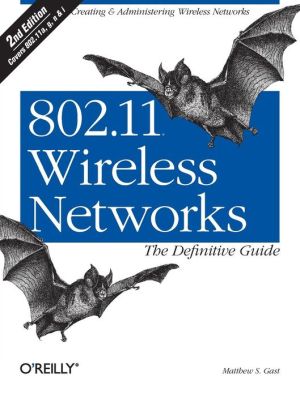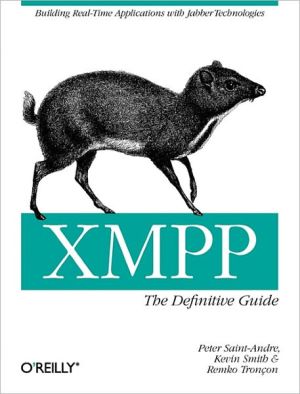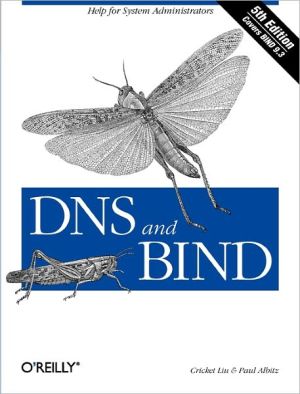MPLS Fundamentals: A Comprehensive Introduction to MPLS Theory And Practice
A comprehensive introduction to all facets of MPLS theory and practice\ \ Helps networking professionals choose the suitable MPLS application and design for their network\ Provides MPLS theory and relates to basic IOS configuration examples\ The Fundamentals Series from Cisco Press launches the basis to readers for understanding the purpose, application, and management of technologies\ \ MPLS has emerged as the new networking layer for service providers throughout the world. For many service...
Search in google:
A comprehensive introduction to all facets of MPLS theory and practice Helps networking professionals choose the suitable MPLS application and design for their network Provides MPLS theory and relates to basic IOS configuration examples The Fundamentals Series from Cisco Press launches the basis to readers for understanding the purpose, application, and management of technologiesMPLS has emerged as the new networking layer for service providers throughout the world. For many service providers and enterprises MPLS is a way of delivering new applications on their IP networks, while consolidating data and voice networks. MPLS has grown to be the new default network layer for service providers and is finding its way into enterprise networks as well. This book focuses on the building blocks of MPLS (architecture, forwarding packets, LDP, MPLS and QoS, CEF, etc.). This book also reviews the different MPLS applications (MPLS VPN, MPLS Traffic Engineering, Carrying IPv6 over MPLS, AToM, VPLS, MPLS OAM etc.).You will get a comprehensive overview of all the aspects of MPLS, including the building blocks, its applications, troubleshooting and a perspective on the future of MPLS.
IntroductionPart I: Fundamentals of MPLSChapter 1 The Evolution of MPLSDefinition of MPLSPre-MPLS ProtocolsBenefits of MPLS Bogus Benefit The Use of One Unified Network Infrastructure Better IP over ATM Integration BGP-Free Core Peer-to-Peer VPN Model Versus Overlay VPN Model0 Overlay VPN Model0 Peer-to-Peer VPN Model Optimal Traffic Flow Traffic EngineeringHistory of MPLS in Cisco IOS Tag Switching to MPLS MPLS ApplicationsSummaryChapter Review QuestionsChapter 2 MPLS ArchitectureIntroducing MPLS Labels Label Stacking Encoding of MPLSMPLS and the OSI Reference ModelLabel Switch RouterLabel Switched PathForwarding Equivalence ClassLabel Distribution Piggyback the Labels on an Existing IP Routing Protocol Running a Separate Protocol for Label DistributionLabel Distribution with LDPLabel Forwarding Instance BaseMPLS PayloadMPLS Label SpacesDifferent MPLS Modes Label Distribution Modes Label Retention Modes LSP Control ModesSummaryChapter Review QuestionsChapter 3 Forwarding Labeled PacketsForwarding of Labeled Packets Label Operation IP Lookup Versus Label Lookup Load Balancing Labeled Packets Unknown LabelReserved Labels Implicit NULL Label Explicit NULL Label Router Alert Label OAM Alert LabelUnreserved LabelsTTL Behavior of Labeled Packets TTL Behavior in the Case of IP-to-Label or Label-to-IP TTL Behavior in the Case of Label-to-Label TTL ExpirationMPLS MTU MPLS MTU Command Giant and Baby Giant Frames Giant Frames on Switches MPLS Maximum Receive UnitFragmentation of MPLS PacketsPath MTU DiscoverySummaryChapter Review QuestionsChapter 4 Label Distribution ProtocolLDP OverviewLDP Operation The Discovery of LSRs That Are Running LDP LDP Session Establishment and Maintenance Number of LDP Sessions Advertising of Label Mappings Label Withdrawing Housekeeping by Means of NotificationTargeted LDP SessionLDP AuthenticationControlling the Advertisement of Labels via LDPMPLS LDP Inbound Label Binding FilteringLDP AutoconfigurationMPLS LDP-IGP Synchronization How MPLS LDP-IGP Synchronization Works MPLS LDP-IGP Synchronization ConfigurationMPLS LDP Session ProtectionSummaryChapter Review QuestionsChapter 5 MPLS and ATM ArchitectureBrief Introduction to ATMLabel EncodingLabel Advertisement Downstream-on-Demand Label Advertisement LDP Control Mode for ATMLDP for LC-ATM Label Space Loop Detection by LDP Loop Detection by Hop Count TLV TTL Manipulation Loop Detection by Path Vector TLV LDP Address Messages Blocking Label RequestsAggregate LabelsVC-MergeNon MPLS-Aware ATM SwitchesLabel Switch ControllerMulti-Virtual Circuit Tagged Bit Rate MPLS CoSFrame Mode ATMReducing the Number of LVCsSummaryChapter Review QuestionsChapter 6 Cisco Express ForwardingOverview of Cisco IOS Switching Methods Process Switching Fast Switching CEF SwitchingWhy Is CEF Needed in MPLS Networks?What Are the Components of CEF? The Adjacency Table The CEF TableOperation of CEFDistributed CEF (DCEF)CEF Switching Packets in HardwareLoad Balancing in CEFUnequal Cost Load BalancingLabeling IP Packets by CEFLoad Balancing Labeled PacketsTroubleshooting CEFSummaryChapter Review QuestionsPart II: Advanced MPLS TopicsChapter 7 MPLS VPNIntroduction to MPLS VPN Definition of a VPN VPN Models MPLS VPN ModelArchitectural Overview of MPLS VPNVirtual Routing Forwarding RD RTs VPNv4 Route Propagation in the MPLS VPN Network Packet Forwarding in an MPLS VPN NetworkBGP BGP Multiprotocol Extensions and Capabilities BGP Extended Community: RT VPNv4 Routes BGP Carrying the Label RRs RR Group BGP Route Selection BGP Multipath Using Multiple RDsPacket ForwardingPE-CE Routing Protocols Connected Routes Static Routing RIP Version 2 OSPF OSPF VRF Configuration OSPF Metric Propagation BGP Extended Communities for OSPF OSPF Network Design Sham Link Down Bit and Domain Tag EIGRP Configuration Pre-Bestpath POI EIGRP PE-CE with Backdoor LinksIS-IS eBGP Autonomous System Override allowas-inHub-and-SpokeSOOVRF AccessInternet Access Internet in a VPN Internet Access Through the Global Routing Table Internet Access Through the Global Routing Table with Static Routes Internet Access Through a Central VRF SiteMulti-VRF CE OSPF VRF-Lite CommandCE ManagementSummaryChapter Review QuestionsChapter 8 MPLS Traffic EngineeringThe Need for MPLS TEOverview of the Operation of MPLS TEDistribution of TE Information Requirements for the IGP OSPF Extensions for TE IS-IS Extensions for TE Flooding by the IGPRouting and Cost of a TE LSP Link TE Attributes Maximum Reservable Bandwidth Attribute Flags TE Metric Shared Risk Link Groups Maximum Reservable Sub-Pool Bandwidth MPLS TE Tunnel (Trunk) Attributes TE Tunnel Path Calculation Path Setup Option IP Explicit Address Exclusion Setup and Holding Priority Reoptimization Periodic Reoptimization Event-Driven Reoptimization Manual ReoptimizationDual TE MetricsPCALCRSVP RSVP and Labels Record Route Object Other Information Carried by RSVP Putting It All Together Shared Explicit Style RSVP Messages PathTear ResvTear PathErr ResvErrLink ManagerFRR FRR–Link Protection FRR–Node Protection SRLG Used by Backup Tunnels Multiple Backup TunnelsForwarding Traffic onto MPLS TE Tunnels Static Routing Policy-Based Routing Autoroute Announce Forwarding Adjacency Direct Mapping of AToM Traffic onto TE Tunnels Class-Based Tunnel Selection Cost Calculation of IGP Routes over TE Tunnels Default Cost Calculation Adjusting the Cost Calculation Load BalancingMPLS TE and MPLS VPN TE Tunnels Between PE Routers TE Tunnel with P Router as Tail End Router VRF-to-TE Tunnel RoutingSummaryChapter Review QuestionsChapter 9 IPv6 over MPLSIntroduction to IPv6 The Driving Forces for IPv6 Overview of the IPv6 Protocol The IPv6 Header The IPv6 Addressing Other IPv6 Novelties Overview of IPv6 Unicast Routing in Cisco IOS IPv6 RIP (RIPng) OSPF for IPv6 or OSPFv3 IS-IS for IPv6 EIGRP for IPv6 Multiprotocol BGP Extensions for IPv6 CEFv6Carrying IPv6 over an MPLS BackboneMPLS VPN Network Using IPv6 over IPv4 Tunnels on the CE RoutersCarrying IPv6 over an MPLS Backbone (6PE) Operation of 6PE Configuration of 6PE Verifying 6PE OperationCarrying IPv6 in VPNs Across an MPLS Backbone (6VPE) Operation of 6VPE Configuration of 6VPE Verifying 6VPE Operation IPv6 Internet Access Through 6VPE Supported Features for 6VPERemarks for Both 6PE and 6VPE Route Reflectors Turning Off TTL Propagation on the PE Routers Load Balancing Labeled IPv6 Packets PHP BGP FunctionalitySummaryChapter Review QuestionsChapter 10 Any Transport over MPLSUnderstanding the Need for AToMTransporting Layer 2 FramesAToM Architecture Data Plane of AToM Signaling the Pseudowire C-Bit PW Type Group ID PW ID Interface Parameters Signaling the Status of the PseudowireThe Control Word Control Word Functions Pad Small Packets Carry Control Bits of the Layer 2 Header of the Transported Protocol Preserve the Sequence of the Transported Frames Facilitate the Correct Load Balancing of AToM Packets in the MPLS Backbone Network Facilitate Fragmentation and ReassemblyMPLS MTU in the MPLS BackboneThe Basic AToM ConfigurationTransported Layer 2 Protocols HDLC PPP Frame Relay DLCI-to-DLCI Port-to-Port Mode (Port Trunking) ATM ATM AAL5 ATM Cell Relay Single Cell Relay Mode Packed Cell Relay Mode Ethernet Ethernet Frame Format EoMPLS Forwarding VLAN ID Rewrite EoMPLS Scenario Examples Dot1q Tunneling (QinQ) over AToMAToM Tunnel SelectionAToM and QoSSummaryChapter Review QuestionsChapter 11 Virtual Private LAN ServiceThe Need for VPLSVPLS ArchitectureVPLS Data PlaneVPLS SignalingThe Basic VPLS ConfigurationVerifying the VPLS OperationVPLS and Tunneling Layer 2 Protocols Tunneling Cisco Discovery Protocol Tunneling Spanning Tree ProtocolTrunk Port Between the CE and PEHierarchical VPLS H-VPLS with Dot1q Tunneling (QinQ) in the Access Layer H-VPLS with MPLS in the Access LayerQuality of ServiceLimiting MAC AddressesRouting PeeringSummaryChapter Review QuestionsChapter 12 MPLS and Quality of ServiceDiffServ with IP PacketsDiffServ with MPLS PacketsDefault MPLS QoS Behavior in Cisco IOSDiffServ Tunneling Models Pipe Model Short Pipe Model Uniform Model Advantages of the DiffServ Tunneling Models How to Implement the Three DiffServ Tunneling ModelsRecoloring the PacketMQC Commands for MPLS QoSMoving MPLS QoS from the PE to the CE RouterImplementing the DiffServ Tunneling Models in Cisco IOSThe Table-Map FeatureThe Use of MPLS QoS for Ethernet over MPLSSummaryChapter Review QuestionsChapter 13 Troubleshooting MPLS NetworksLabel Stack DepthVerifying Label Switched PathTracerouting in MPLS Networks Tracerouting in an IP Network Label-Aware ICMP TTL Behavior in MPLS Networks Tracerouting in MPLS Networks Problems with Tracerouting in MPLS Networks mpls ip ttl-expiration pop Command no mpls ip propagate-ttlMPLS MTUPingDebug MPLS PacketsDebugging Load Balancing of Labeled PacketsVerifying MPLS on the InterfaceVerifying Number of Bytes Label SwitchedMPLS-Aware NetflowSummaryChapter Review QuestionsChapter 14 MPLS Operation and MaintenanceRequirements of MPLS OAM Detection and Diagnosis of Control and Data Plane Defects Detection of a Defect in a Label Switched Path (LSP) OAM Packets Flowing on the Same Path as MPLS Data Traffic Path Characterization Measurement of SLAs OAM Interworking MIBs AccountingRouter Alert Option and Router Alert Label Router Alert LabelOAM Alert LabelMPLS LSP Ping LSP Ping Protocol Details Target FEC Stack Downstream Mapping Interface and Label Stack TLV Errored TLVs TLV Reply TOS Byte LSP Ping Operation LSP Verification MPLS Ping in Cisco IOSMPLS LSP Traceroute MPLS Traceroute in Cisco IOS Router Alert LabelLoad BalancingVCCVIP Service Level Agreement VRF-Aware IP SLANetflow AccountingSNMP/MIBs Context-Based Access for SNMP over MPLS VPN MPLS VPN MIBsSyslog OAM Message MappingSummaryChapter Review QuestionsChapter 15 The Future of MPLSNew MPLS ApplicationsWork at IETF MPLS Control Word FCS Retention AToM Fragmentation and Reassembly Circuit Emulation GMPLS OAM Protocols MPLS Labeled MulticastThe Proliferation of MPLSSummaryPart III: AppendixesAppendix A Answers to Chapter Review QuestionsAppendix B Static MPLS Labels (online)Index
